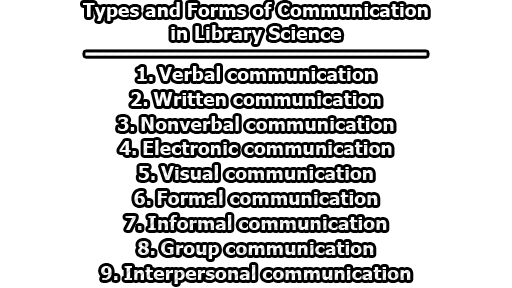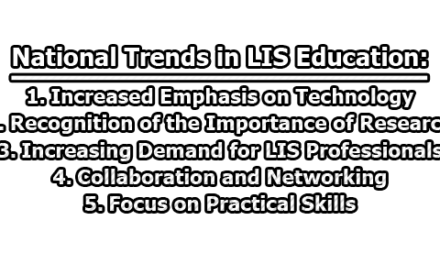Types and Forms of Communication in Library Science:
In library science, communication is a crucial aspect of the profession. There are several types and forms of communication that librarians and library staff use, including:
- Verbal communication: Verbal communication in library science includes face-to-face interactions with library users and colleagues. It is used for providing assistance, answering queries, and providing guidance on library resources and services.
- Written communication: Written communication is commonly used in library science. It includes emails, letters, memos, reports, and notices. Written communication is used for announcing library events, policies, and changes.
- Nonverbal communication: Nonverbal communication in library science includes body language, facial expressions, and gestures. It is used to convey friendliness, empathy, and attentiveness toward library users.
- Electronic communication: Electronic communication is an essential form of communication in library science. It includes emails, chat services, instant messaging, and social media platforms. Electronic communication is used for providing online reference services and communicating with remote library users.
- Visual communication: Visual communication is used to promote library resources, events, and services. It includes posters, flyers, banners, and digital signage.
- Formal communication: Formal communication is used for official library announcements, policies, and reports. It includes written documents such as annual reports, strategic plans, and policy manuals.
- Informal communication: Informal communication is used among library staff and includes conversations, informal meetings, and social events.
- Group communication: Group communication is used for meetings, seminars, workshops, and conferences. It involves communicating with multiple people, such as library staff, stakeholders, and library users.
- Interpersonal communication: Interpersonal communication is used for one-on-one interactions between library staff and library users. It involves verbal and nonverbal communication.
Overall, effective communication is essential for providing quality library services, building strong relationships with library users, and ensuring that library resources are utilized to their full potential.

Library Lecturer at Nurul Amin Degree College










